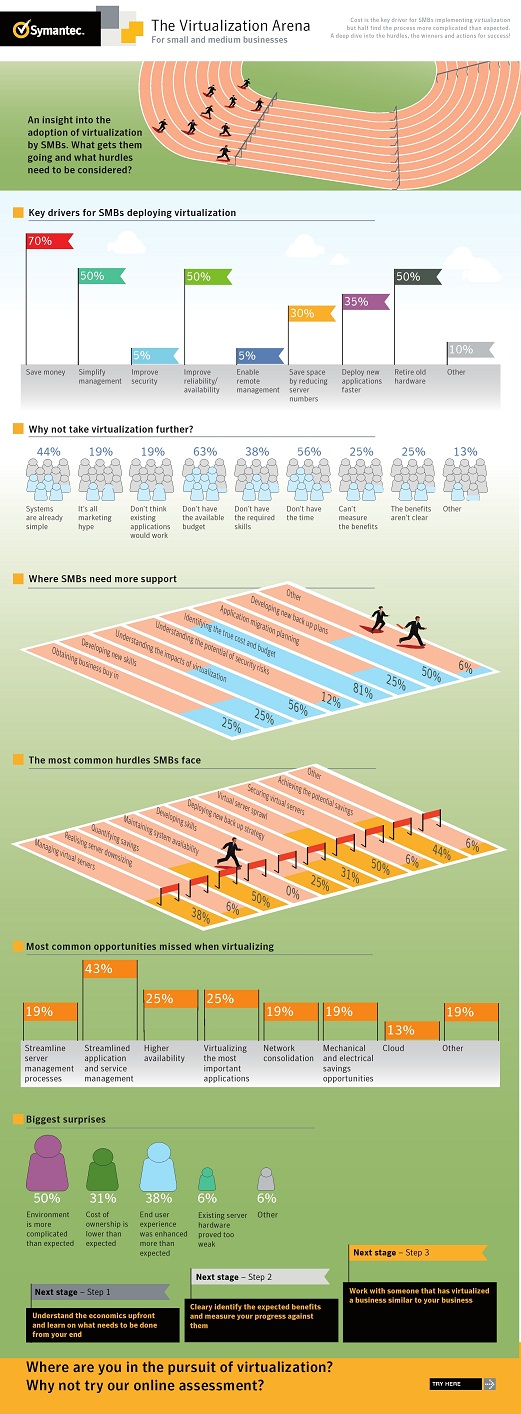Transitioning To Virtualization For The SMB [Infographic]
Tuesday, August 28, 2012Posted by Andy Wendt
By Matt Stephenson
Before virtualizing their environments, companies often had to at least double the amount of hardware they used. Doing this was both costly and inefficient. However, with the advent of virtualization, a single server now has the ability to handle various, disparate operating systems simultaneously, supporting a range of business applications.
Making this transition can be a little complicated. Here are some tips to help you get started:
1.Meet with a Value Added Reseller (VAR) experienced in virtualization, who can review your business growth plans and processes, as well as your IT infrastructure. In an effort to avoid any potential issues, this consultant should also have expertise in securing and backing up virtual environments.
2.It’s important to conduct an inventory to define how a virtual solution will impact your infrastructure. Review how you are using current servers and your current usage patterns, and whether streamlining processes makes sense for your environment. Figure out the number of users accessing your virtualized solution and current network traffic patterns.
3.Decide which hardware and software you would like to virtualize. Some candidates you may consider for virtualization are multi-processor servers dedicated to single-processor applications, older servers and seldom-used servers. Also consider virtualizing applications, like those using a single processor, less used applications and those currently in a development or test environment.
4.Once you have built or repurposed old server hardware, assembled the necessary component hardware and integrated network and storage systems, test and deploy the virtualization solution before rolling it out to the entire company. Doing this will allow you to detect and address issues before they impact company-wide users and productivity.
About The Author
Matt Stephenson learned most of what he knows about the software industry by right-clicking and seeing what happens next. Matt started out at Veritas software before moving to two successful stints with SMB VARs, then returned to the corporate side with Panda Security and now Symantec.

